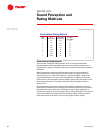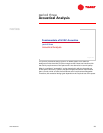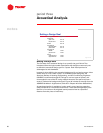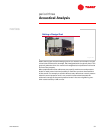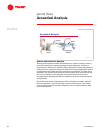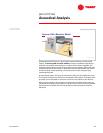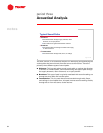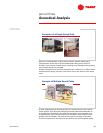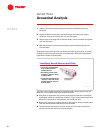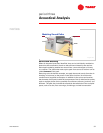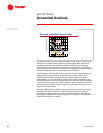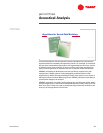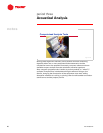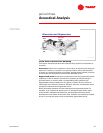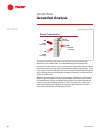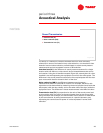
36 TRG-TRC007-EN
notes
period three
Acoustical Analysis
1 Supply airborne through the supply ductwork and diffusers and into
the space
2 Supply breakout as the sound travels through the walls of the supply
ductwork, through the ceiling tile, and into the space
3 Return airborne through the air-handler intake, return ductwork and grilles,
and into the space
4 Wall transmission as the sound travels through the adjoining wall and
into the space
These paths are typical of most centralized air-handling equipment, including
packaged rooftop and self-contained air conditioners. Most other equipment
types have a subset of these paths.
There are a few important points to remember when identifying sources and
paths for a source–path–receiver acoustical analysis.
n One piece of equipment may contain several sound sources. For example,
a packaged rooftop air conditioner (shown in Figure 41) contains supply and
exhaust (or return) fans, compressors, and condenser fans.
n Sound may travel from a single source to the receiver along multiple paths.
This was demonstrated with the previous example.
n The total sound heard by the receiver is the sum of all the sounds from
various sources that travel along several paths.
Identifying Sound Sources and Paths
I One piece of equipment
may contain several
sound sources
I Sound may travel from
source to receiver along
multiple paths
I Total sound heard by the
receiver is the sum of all
sounds from all sources
and all paths
packaged rooftop
packaged rooftop
air conditioner
air conditioner
Figure 41



